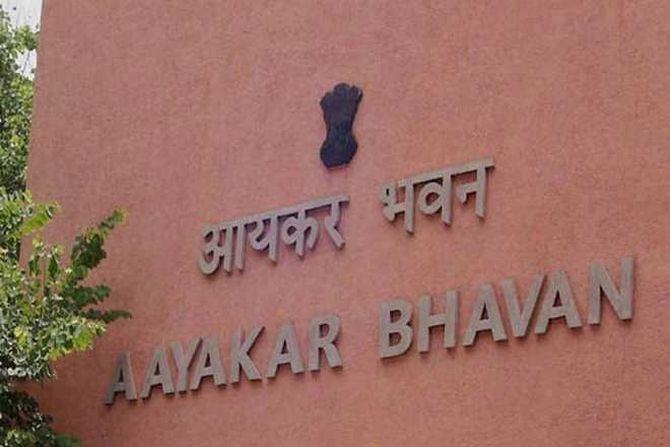 | « Back to article | Print this article |
The new scheme came into effect on Thursday. However, even after a scrutiny assessment, appeals will continue to be done through personal representation.

A person paying income tax will have the option of having a video-conference with tax officials under the government’s newly launched e-assessment scheme even though in the normal course there will be no face-to-face interaction between them.
The new scheme came into effect on Thursday. However, even after a scrutiny assessment, appeals will continue to be done through personal representation.
The scheme is, however, silent on some key aspects such as assessment years to which this scheme will be applicable, provision of settlement under the dispute resolution panel (DRT) in the case of transfer-pricing cases, risk-management strategy, and terms of reference to many administrative units created to facilitate assessment cycle.
The e-assessment scheme, 2019, launched to do faceless assessments of tax returns, will take up cases selected this year for limited scrutiny, under Section 143 (2) (where an assessee has escaped the tax net). This will be done through national and regional e-assessment centres, which will allocate cases in automated form.
Under the scheme, all communication with taxpayers and among e-assessment centres will be in electronic form, which will be digitally authenticated. Most importantly, assessees will not make a personal appearance at these centres. In a case where a modification is proposed in the draft assessment order, the assessee gets a notice asking her or him to make his case orally.
‘… the assessee or his authorised representative shall be entitled to seek a personal hearing so as to make his oral submissions or present his case before the income-tax authority in any unit under this Scheme, and such hearing shall be conducted exclusively through video conferencing in accordance with the procedure laid down by the Board,’ reads the gazette notification issued by the Central Board of Direct Taxes (CBDT) on Thursday.
It further states that the national e-assessment centre will examine the assessment order based on risk management strategy and other broad parameters, whose details the notification did not provide.
Tax experts say the scheme appears to be complicated and requires clarification.
“Gradually taxpayers have become used to e-filing of income-tax returns. Though aimed at easing the process of assessment for taxpayers, multiple nodal bodies set up to facilitate e-assessments could initially make the scheme and procedures complicated for a common taxpayer to comprehend. Interestingly, as a fail-safe practice, the scheme provides for an option to transfer the case to the jurisdictional assessing officer at any stage of assessment,” said Sandeep Jhunjhunwala, director, Nangia Advisors (Andersen Global).
Another expert says this is a fantastic idea if secrecy can be retained.
“I feel there is a requirement to still have a face-to-face meeting between taxpayer and authorities, especially where the authorities need clarification on the basis of information made and the taxpayer is willing to provide it. One option could be to have a few individual officers who are managing such consoles which can seek clarifications and forward them to the departments concerned without divulging the details about the taxpayer,” said S R Patnaik, partner and head (taxation), Cyril Amarchand Mangaldas.
The CBDT’s rule says the scrutiny notice will be issued by the national e-assessment centre. The taxpayer will be asked to file her or his reply within 15 days from the date of receipt of the notice. The notice will go electronically to the registered address of the taxpayer.
After receiving the response, the national e-assessment centre will issue the acknowledgment. Then the centre will assign the case to the regional e-assessment centre through an automated allocation system. In case the regional centre required assistance from a verification unit or technical assistance, such requests will be processed through the automated allocation system. If the regional e-assessment centre wants further information or documents from the taxpayer, such a request first has to be made to the national e-assessment centre.
The regional e-assessment centre will make a draft assessment order and send it to the national e-assessment centre. The national unit will examine the draft order in accordance with risk management strategy using automated examination tool and will either accept the draft order or provide another show cause to assessee is there is any change or send the draft order to review unit. Review unit may accept or suggest changes to the national unit. The national unit shall again send it to regional assessment unit.
The national unit will issue notice to assessee again and the entire cycle may be followed again until the national unit will pass the order.
All work such as imposition of penalty, collection and recovery, appeal effect and rectification will be done by jurisdictional assessing officer.
The jurisdictional Commissioner I-T Appeals will hear the appeals against order by national unit.